– Found Object / Still Life – Photography –
– Three Images –
– [Triptych] –
What is a Triptych?
A triptych is one picture that has three panels, it is a set of three images that are correlated together artistically. These can range from found objects to landscapes to paintings etc. As long as it is hinged into three separate components it is referred to as a triptych. Typically, it can be a combination of one place but it shows multiple views points of the subject/place. Or it can be a series of objects that have a certain theme, making them all relatable and coherent. There is no law binding way to display a triptych, they can be made vertically or horizontally or in the shape of a triangle. It does not matter. However, most people know them as panel paintings or in a horizontal line.
Triptych forms were formally known to come about during the early Christian art. Typically they were used as altar paintings. The Roman Cathedral (of our lady) in Antwerp, Belgium used to have two triptych artworks created by Peter Paul Rubens –
I discovered Francis Bacon when I was researching into who said the quote ‘money is a good servant but a bad master’. I found out he was a homosexual and this impacted deeply on his work, and this repelled his father (a painter also). In 1927, he went to Picasso’s exhibition (Galerie Paul Rosenberg) and was inspired by Picasso’s work.
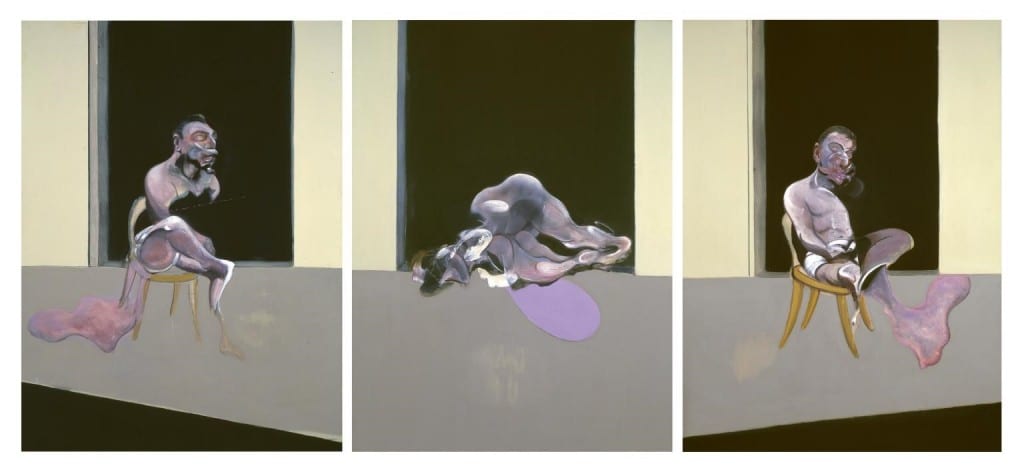
This image of the Two Figures in a room clearly features two naked men. Possibly lovers. As Bacon was gay, this seems like a very likely possibility. Each section of the images are different but are somehow related. This makes a triptych. Bacon’s style is particular and rather strange. Bacon grew a manifestation for nude configuration. The connect between Bacon’s life and his work is very strong and makes his art more powerful and interesting. Bacon intended for this piece of work to be a triptych, the images tell a story in a way Bacon wanted, using a three-panel image he makes it work.
What I love about triptych images is the way each one relates to each other, making the viewers unaware they are making a connection to a theme in each of the images.
Example of still life triptych’s;
Anatomy of a laugh – Ryan Brenizer
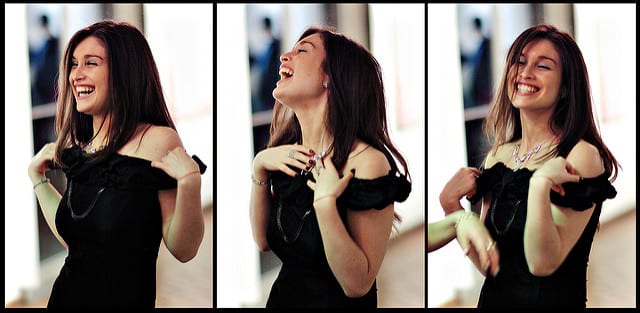
This is quite a common set of images to do. There is more than one way to laugh, we laugh by smiling – throwing our heads back – or delicately. This is a great triptych.
2009 – Lauren Lemon
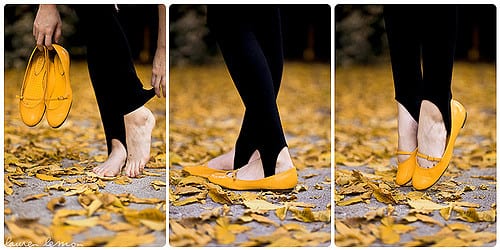
This image is very fun. I love how the colours match the leaves, and you instantly know it is autumn.
Day 86 – Rock, Paper, Scissors – Alex Turton
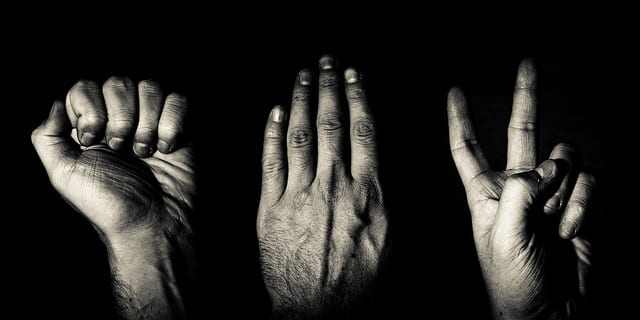
When I saw this image, I thought it was very clever. Although it is just a set of hands, you instantly know what it is without reading the titles. It is visual images like this that remind us of simple things we know and are familiar with.
Untitled – Cs.foto / Simply Bloom Photography
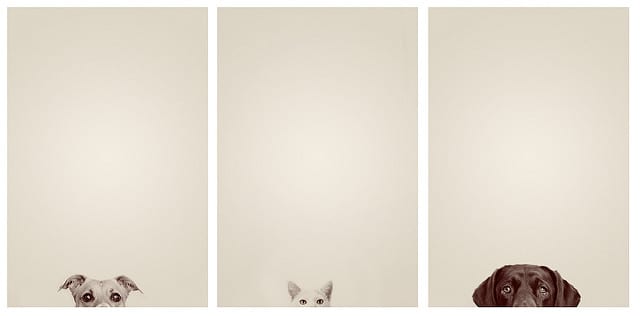 As an animal lover, I decided to incorporate this because anyone who has a pet knows it is not easy getting them to sit still for a picture. It also shows that animals are very curious… and cute.
As an animal lover, I decided to incorporate this because anyone who has a pet knows it is not easy getting them to sit still for a picture. It also shows that animals are very curious… and cute.
-Still Life Photography –
For this brief, we have been tasked with finding objects that relate to each other and placing them in a triptych setting.
Firstly, what is still life? – When photographers talk about ‘still life’ they mean, a subject or object that is of inanimate qualities. However, this term is used very lightly because we can (in some cases) refer to still life as a ‘subject’, for example, we can use flowers, plants, trees, food etc. As long as the subject does not move, it is still classed as ‘forms of still life’. This allows photographers to be more creative with the smaller objects by using interesting settings, backdrops, lighting, prime camera lenses, so on and so fourth. By using different themes it makes for a more interesting piece.
– Edward Weston – Found objects –
During the lecture, we got shown a piece of work by Edward Weston. The image of was a pepper. Weston is known for being innovative and influential among American photographers and possibly many, many more. Westons work is mainly found objects, however, he likes to use women quite a bit in his work. If he is using found objects, the objects are referring to women’s bodies.


Obviously, this is a nude lady. However, if you look closer with this and the pepper side by side, you notice a resemblance. The peppers are in the shape of a person. Weston likes to take photos of his women in particular poses just like the deformed peppers.

I think this may be a cabbage leaf or kind of salad/vegetable leaf. T, me it either looks like the flow of a women’s hair or a women in a bed sheet.
Weston is very clever in the way he poses his objects. The pepper is one of his most famous pieces. The use of black and white take it away from its real form – colourful, making it unusual strange for us to look at. Therefore, we can make assumptions and be more open minded about what it could be. In all his images there is not much of a background, the image takes up the whole composition/space. To me, this is done to bring out more detail in the objects, and there is nothing else to be distracted by. The contrasts between it all are evenly balanced.
Test shoots;
During the workshop, we got into groups and did a few test shots. We decided to use a collaboration of random objects to create an artsy piece. We used a blue background to almost match and complement the colours of the objects.
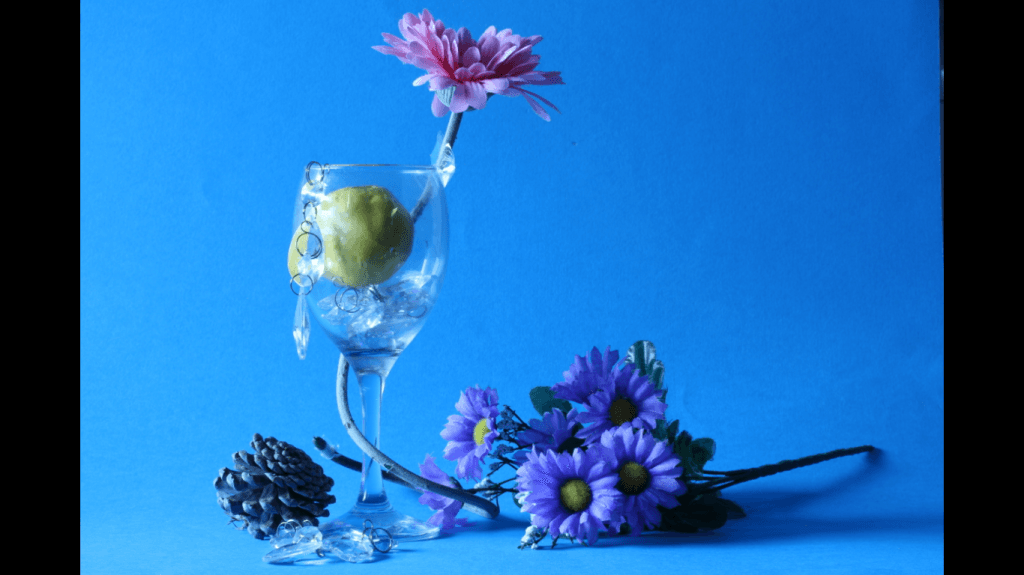
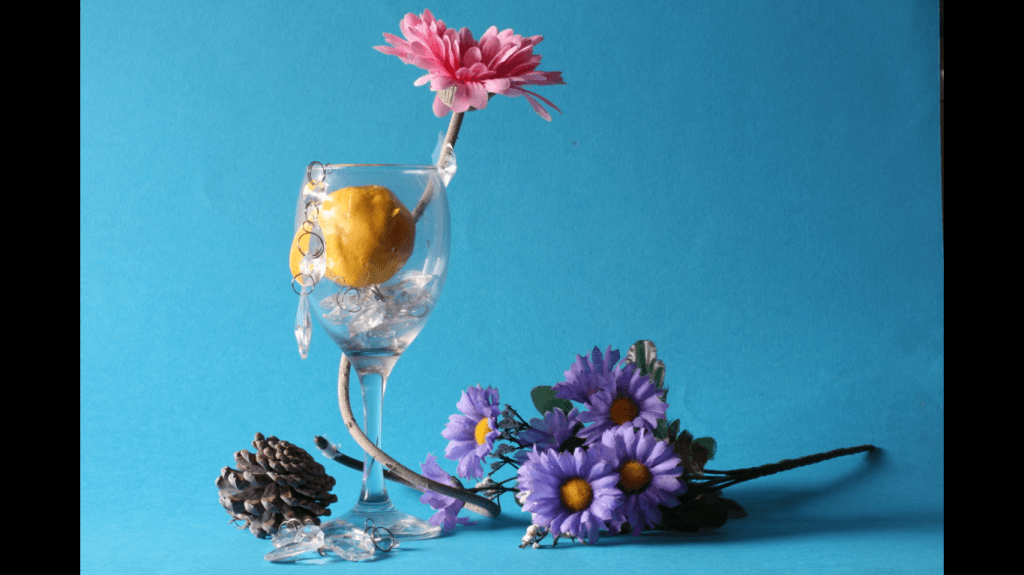
We decided to change it up a little bit and use an object you would find/use on a table when dining. I was bored of the same lighting and decided to put some crystals in a glass and shine a torch through it, it created a beautiful shimmering effect that made a spotlight essentially (Second image).
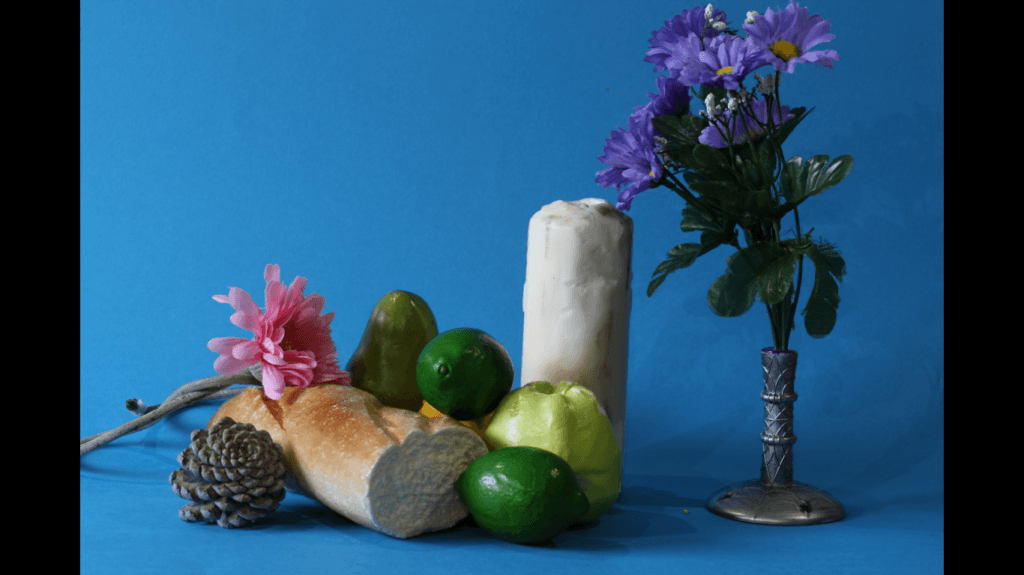
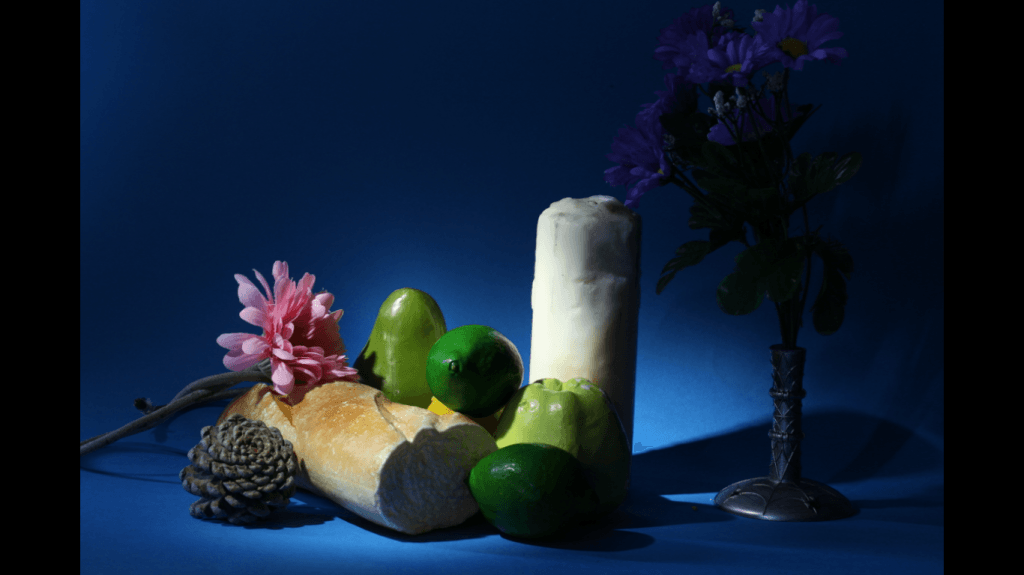
– My Work –
In my work, I was fascinated in finding objects that were really old or that have been created by nature. Essentially, I wanted to do a triptych of ‘Natural Selection’ – or – ‘Mother Nature’. These are things that have either withered away because it is natural to do so (this is the roses I found), a shell which has beautiful colours on it, and a very old bracelet.
With the roses, I found them dumped. This was a few days before Valentines Day, they were still in the wrapping from the florists but the paper was wet and damaged. Therefore, I dried the roses out on my window ledge for a week and decided to use them as part of the project.
I was walking along Hunstanton beach looking for some cool shells to take pictures of as part of this project, and I found an interesting shell that has some beautiful colours embedded on it.
When I was eight, I made a bracelet. This bracelet was made out of pink wooden beads, They were supposed to be good luck. However, I could never find them, until I moved out of home. They were found in the loft in a box of all my old memory stuff. Although this brief is about found objects, I feel it does not really belong to me anymore, it does not fit and it is too old to wear. It has been amongst things for so long it has lost meaning and I have lost attachment to it. Over time, it has lost its colour and the thread is about to break. The bracelet is roughly fourteen years old, it is a clear indicator that Mother Nature and Natural Selection can age anything no matter what it is.
These three images all relate to time. Time connects the life and death of a flower, the shell that has probably taken years to form, and a very old bracelet that is withering away slowly.
– Why I chose this particular set of images –
This is the connection to my triptych – With the bracelet, I wanted to put it in the shape of something, although my work is not exactly like Edward Western, I still wanted to incorporate his style with this particular image. I made it into a love heart because it meant a lot once upon a time. I put the flowers into a display just to make them look in some sort of sensibly arranged fashion. Using a rose petal I propped the shell up so it looked staged. Kind of like when I found it. The whole entitled theme is surrounding mother nature. The shell has been formed by the sea, the wood on the beads has slowly weathered along with the thread and the flowers have died naturally. However, like everything involving mother nature it looks like an accident, but when doing these images I felt it needed to be staged so it would have some sort of connection.
– [Final Images] –
http://www.discoverflanders.com/rubens.asp
http://landscapephotographyshop.com/about-triptych-art/
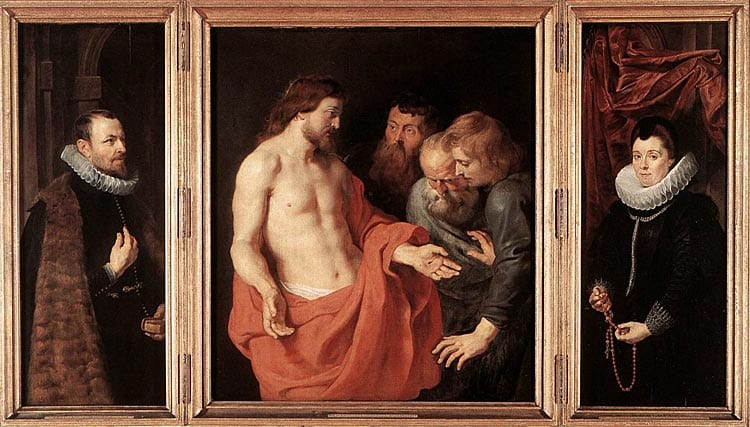
Leave a comment